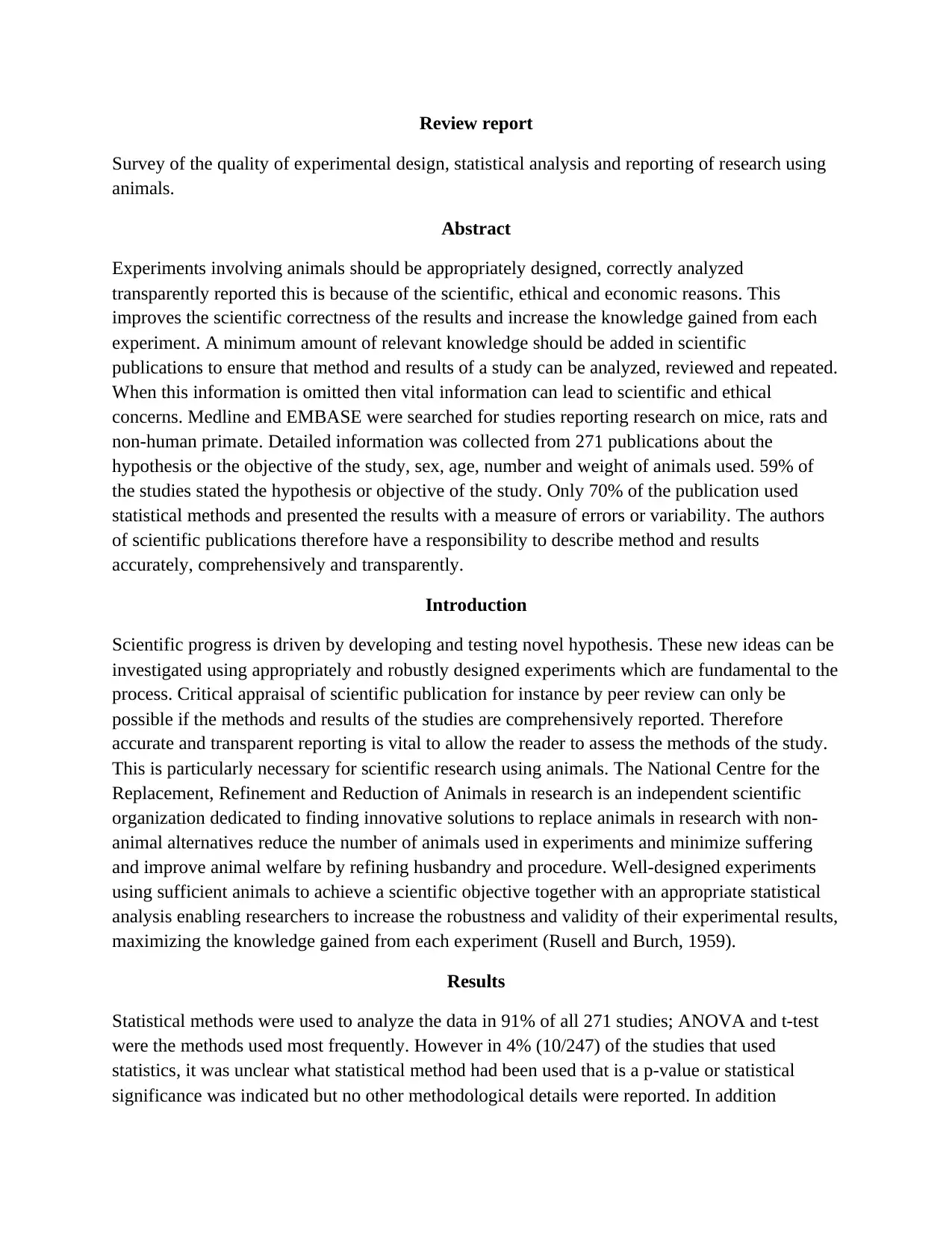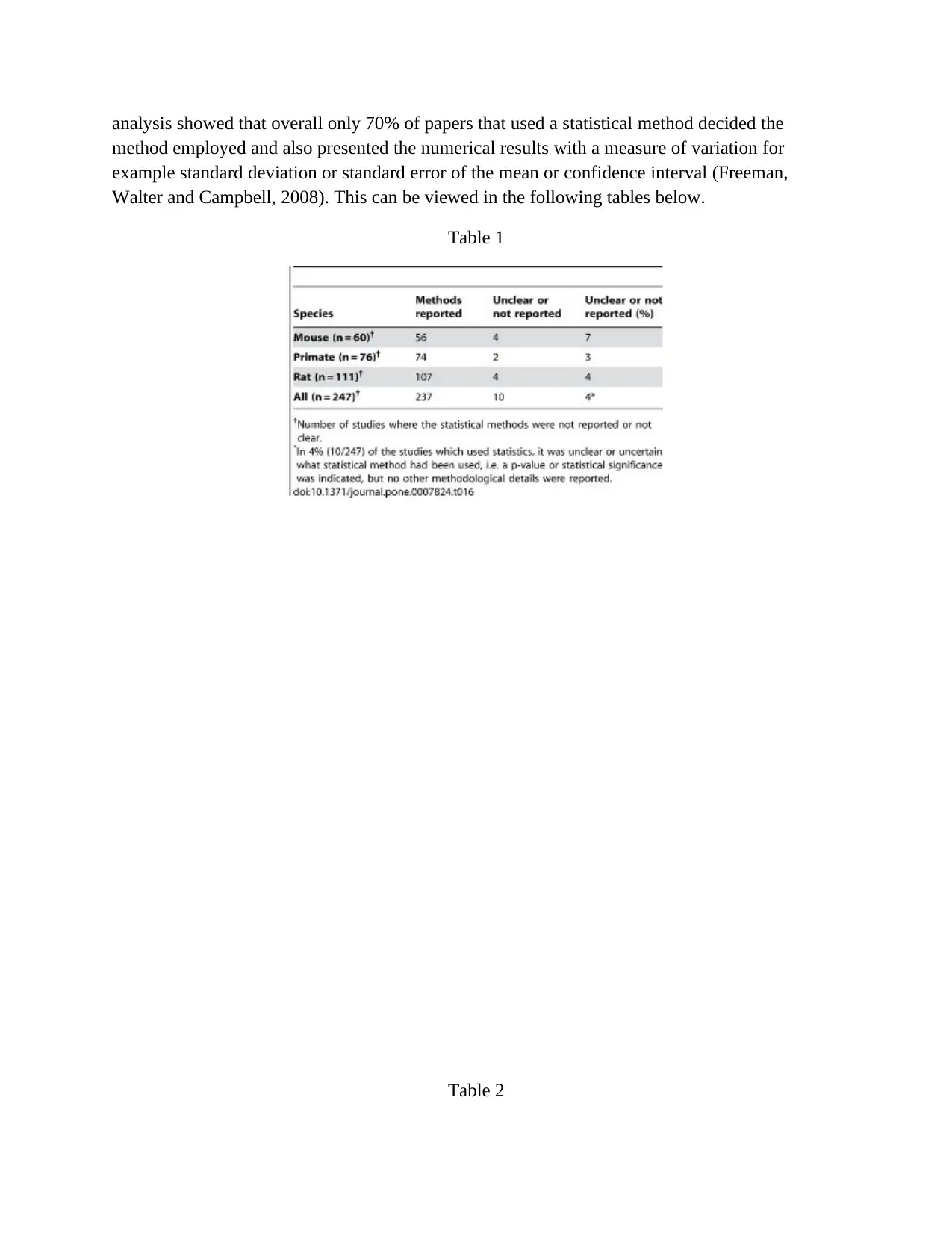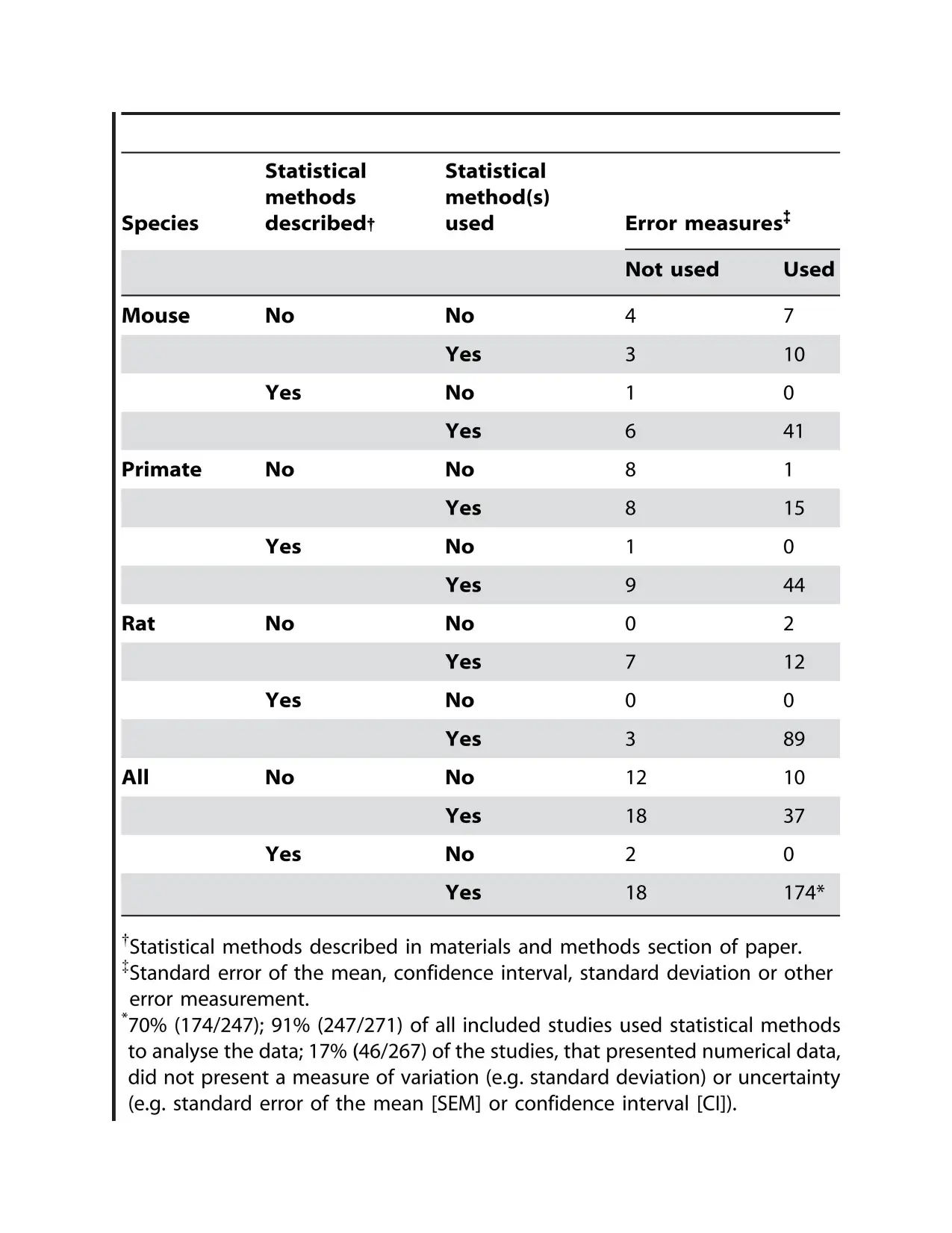Review of Experimental Design in Animal Research Studies
VerifiedAdded on 2023/01/19
|4
|619
|39
Report
AI Summary
This report presents an analysis of the quality of experimental design, statistical analysis, and reporting in animal research. The study examined 271 publications involving mice, rats, and non-human primates, assessing the reporting of study objectives, methods, and results. The findings reveal...

Review report
Survey of the quality of experimental design, statistical analysis and reporting of research using
animals.
Abstract
Experiments involving animals should be appropriately designed, correctly analyzed
transparently reported this is because of the scientific, ethical and economic reasons. This
improves the scientific correctness of the results and increase the knowledge gained from each
experiment. A minimum amount of relevant knowledge should be added in scientific
publications to ensure that method and results of a study can be analyzed, reviewed and repeated.
When this information is omitted then vital information can lead to scientific and ethical
concerns. Medline and EMBASE were searched for studies reporting research on mice, rats and
non-human primate. Detailed information was collected from 271 publications about the
hypothesis or the objective of the study, sex, age, number and weight of animals used. 59% of
the studies stated the hypothesis or objective of the study. Only 70% of the publication used
statistical methods and presented the results with a measure of errors or variability. The authors
of scientific publications therefore have a responsibility to describe method and results
accurately, comprehensively and transparently.
Introduction
Scientific progress is driven by developing and testing novel hypothesis. These new ideas can be
investigated using appropriately and robustly designed experiments which are fundamental to the
process. Critical appraisal of scientific publication for instance by peer review can only be
possible if the methods and results of the studies are comprehensively reported. Therefore
accurate and transparent reporting is vital to allow the reader to assess the methods of the study.
This is particularly necessary for scientific research using animals. The National Centre for the
Replacement, Refinement and Reduction of Animals in research is an independent scientific
organization dedicated to finding innovative solutions to replace animals in research with non-
animal alternatives reduce the number of animals used in experiments and minimize suffering
and improve animal welfare by refining husbandry and procedure. Well-designed experiments
using sufficient animals to achieve a scientific objective together with an appropriate statistical
analysis enabling researchers to increase the robustness and validity of their experimental results,
maximizing the knowledge gained from each experiment (Rusell and Burch, 1959).
Results
Statistical methods were used to analyze the data in 91% of all 271 studies; ANOVA and t-test
were the methods used most frequently. However in 4% (10/247) of the studies that used
statistics, it was unclear what statistical method had been used that is a p-value or statistical
significance was indicated but no other methodological details were reported. In addition
Survey of the quality of experimental design, statistical analysis and reporting of research using
animals.
Abstract
Experiments involving animals should be appropriately designed, correctly analyzed
transparently reported this is because of the scientific, ethical and economic reasons. This
improves the scientific correctness of the results and increase the knowledge gained from each
experiment. A minimum amount of relevant knowledge should be added in scientific
publications to ensure that method and results of a study can be analyzed, reviewed and repeated.
When this information is omitted then vital information can lead to scientific and ethical
concerns. Medline and EMBASE were searched for studies reporting research on mice, rats and
non-human primate. Detailed information was collected from 271 publications about the
hypothesis or the objective of the study, sex, age, number and weight of animals used. 59% of
the studies stated the hypothesis or objective of the study. Only 70% of the publication used
statistical methods and presented the results with a measure of errors or variability. The authors
of scientific publications therefore have a responsibility to describe method and results
accurately, comprehensively and transparently.
Introduction
Scientific progress is driven by developing and testing novel hypothesis. These new ideas can be
investigated using appropriately and robustly designed experiments which are fundamental to the
process. Critical appraisal of scientific publication for instance by peer review can only be
possible if the methods and results of the studies are comprehensively reported. Therefore
accurate and transparent reporting is vital to allow the reader to assess the methods of the study.
This is particularly necessary for scientific research using animals. The National Centre for the
Replacement, Refinement and Reduction of Animals in research is an independent scientific
organization dedicated to finding innovative solutions to replace animals in research with non-
animal alternatives reduce the number of animals used in experiments and minimize suffering
and improve animal welfare by refining husbandry and procedure. Well-designed experiments
using sufficient animals to achieve a scientific objective together with an appropriate statistical
analysis enabling researchers to increase the robustness and validity of their experimental results,
maximizing the knowledge gained from each experiment (Rusell and Burch, 1959).
Results
Statistical methods were used to analyze the data in 91% of all 271 studies; ANOVA and t-test
were the methods used most frequently. However in 4% (10/247) of the studies that used
statistics, it was unclear what statistical method had been used that is a p-value or statistical
significance was indicated but no other methodological details were reported. In addition
Paraphrase This Document
Need a fresh take? Get an instant paraphrase of this document with our AI Paraphraser

analysis showed that overall only 70% of papers that used a statistical method decided the
method employed and also presented the numerical results with a measure of variation for
example standard deviation or standard error of the mean or confidence interval (Freeman,
Walter and Campbell, 2008). This can be viewed in the following tables below.
Table 1
Table 2
method employed and also presented the numerical results with a measure of variation for
example standard deviation or standard error of the mean or confidence interval (Freeman,
Walter and Campbell, 2008). This can be viewed in the following tables below.
Table 1
Table 2

⊘ This is a preview!⊘
Do you want full access?
Subscribe today to unlock all pages.

Trusted by 1+ million students worldwide

Conclusion
Whilst our findings are limited to experimental studies using rodents and primates carried out in
laboratories, which is the statistical population that dominate the biomedical research literature
hence our results are important and indeed indicate cause for concern.
References
Russell WMS, Burch RL (1959) The Principles of Humane Experimental Technique. London: Metheun.
Available: http://altweb.jhsph.edu/pubs/books/humane_exp/het-toc#. Accessed 20 October 2009.
Freeman J, Walters S, Campbell M (2008) How to Display Data. London: Blackwell BMJ books.
Whilst our findings are limited to experimental studies using rodents and primates carried out in
laboratories, which is the statistical population that dominate the biomedical research literature
hence our results are important and indeed indicate cause for concern.
References
Russell WMS, Burch RL (1959) The Principles of Humane Experimental Technique. London: Metheun.
Available: http://altweb.jhsph.edu/pubs/books/humane_exp/het-toc#. Accessed 20 October 2009.
Freeman J, Walters S, Campbell M (2008) How to Display Data. London: Blackwell BMJ books.
1 out of 4
Related Documents
Your All-in-One AI-Powered Toolkit for Academic Success.
+13062052269
info@desklib.com
Available 24*7 on WhatsApp / Email
![[object Object]](/_next/static/media/star-bottom.7253800d.svg)
Unlock your academic potential
© 2024 | Zucol Services PVT LTD | All rights reserved.





